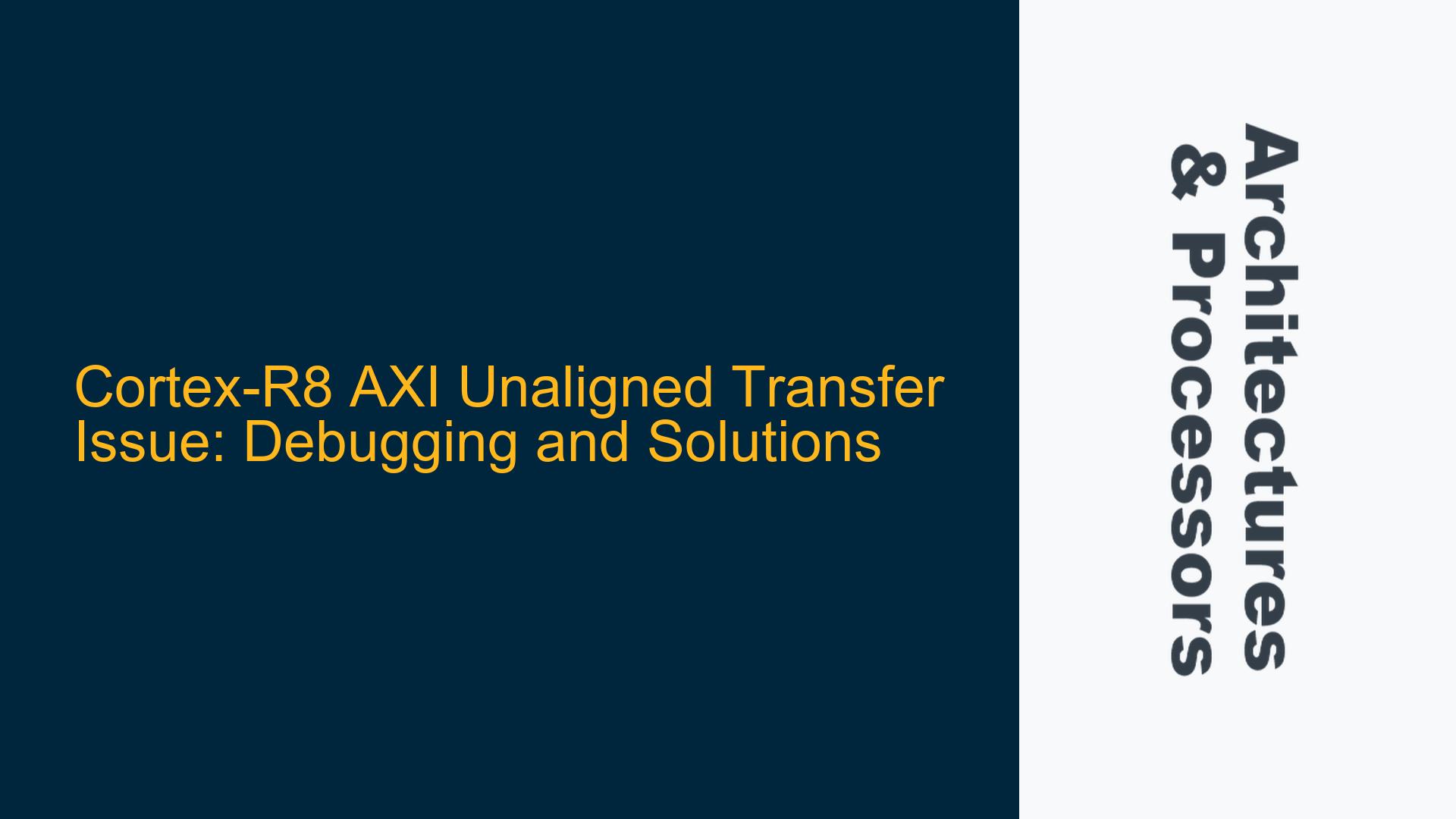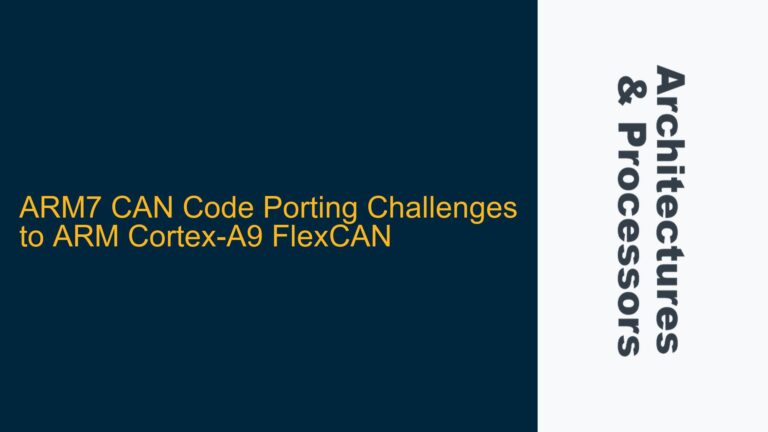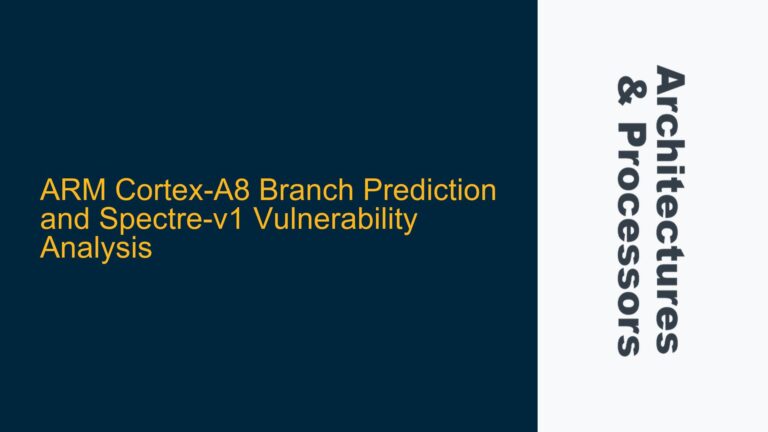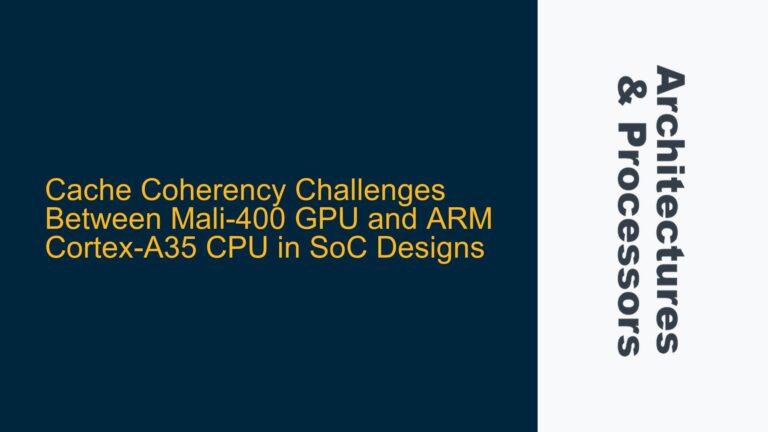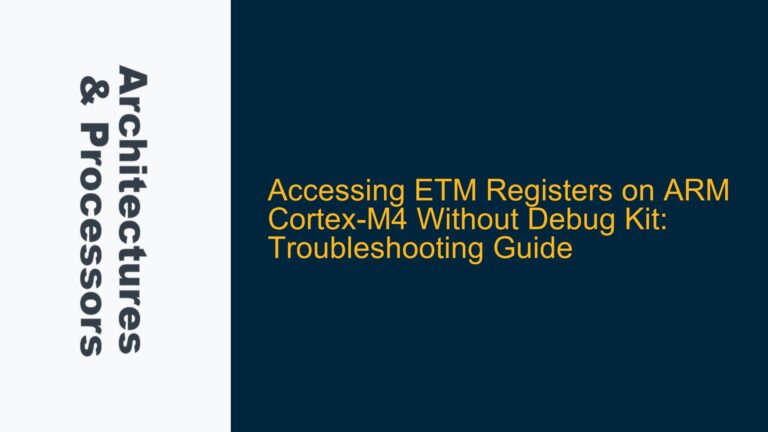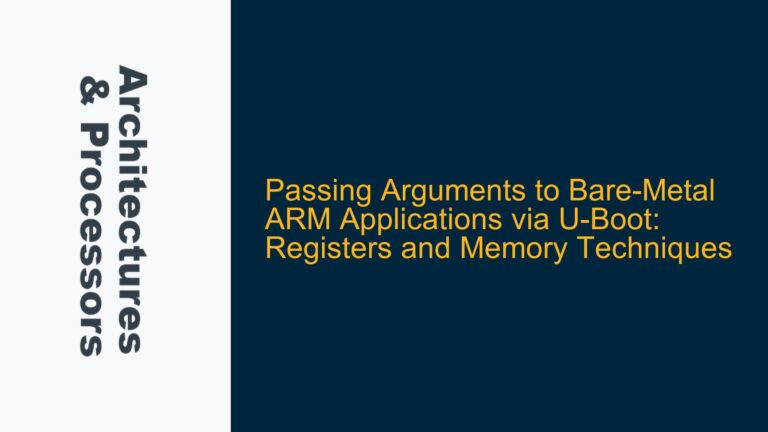Cortex-R8 AXI Unaligned Memory Access Behavior
The Cortex-R8 processor, like many ARM cores, has specific requirements and behaviors when it comes to handling unaligned memory accesses. An unaligned memory access occurs when a data transfer operation targets an address that is not a multiple of the data size being accessed. For example, attempting to write a 32-bit integer to an address that is not a multiple of 4 (e.g., 0xFC000001) constitutes an unaligned access. In the Cortex-R8, unaligned accesses are not universally supported and depend on several factors, including the memory type and system configuration.
The Cortex-R8’s AXI (Advanced eXtensible Interface) bus is designed to handle high-performance data transfers, but it imposes strict alignment requirements for certain memory types. When an unaligned access is attempted, the behavior can vary depending on the memory region’s configuration in the Memory Protection Unit (MPU) and the settings in the System Control Register (SCTLR). If the memory region is marked as "normal" and the SCTLR.A bit is cleared (SCTLR.A == 0), unaligned accesses are permitted. However, if the memory region is marked as "device" or "strongly-ordered," unaligned accesses are not allowed and will result in undefined behavior or a fault.
In the provided scenario, the user attempts to perform two memory writes: one to an aligned address (0xFC000000) and another to an unaligned address (0xFC000001). The first write succeeds, but the second write does not appear in the waveform, indicating that the unaligned access is being blocked or masked by the system. This behavior suggests that either the memory region is not configured to support unaligned accesses, or the SCTLR.A bit is not set correctly.
Memory Type Configuration and SCTLR.A Bit Settings
The Cortex-R8’s handling of unaligned accesses is governed by two primary factors: the memory type and the SCTLR.A bit. The memory type is determined by the MPU or the default memory map, while the SCTLR.A bit controls whether unaligned accesses are enabled for normal memory regions.
Memory Type Configuration
The Cortex-R8 classifies memory into three types: normal, device, and strongly-ordered. Each type has different characteristics and alignment requirements:
-
Normal Memory: This type of memory is used for general-purpose data storage and supports unaligned accesses when enabled. Normal memory is typically used for RAM and other high-speed storage devices. The MPU or default memory map must explicitly mark the memory region as normal for unaligned accesses to be permitted.
-
Device Memory: This type of memory is used for memory-mapped I/O devices and does not support unaligned accesses. Device memory has strict alignment requirements, and any attempt to perform an unaligned access will result in a fault or undefined behavior.
-
Strongly-Ordered Memory: This type of memory is used for critical system resources and also does not support unaligned accesses. Strongly-ordered memory has the strictest alignment requirements and is typically used for system control registers and other critical hardware components.
In the provided scenario, the memory region at 0xFC000000 is likely not marked as normal memory, or the SCTLR.A bit is not configured correctly. This would explain why the unaligned access to 0xFC000001 is being blocked.
SCTLR.A Bit Settings
The SCTLR.A bit (bit 1 of the System Control Register) controls whether unaligned accesses are enabled for normal memory regions. When SCTLR.A is set to 0, unaligned accesses are permitted for normal memory. When SCTLR.A is set to 1, unaligned accesses are disabled, and any attempt to perform an unaligned access will result in a fault.
In the provided scenario, the user has confirmed that SCTLR.A is set to 0, which means that unaligned accesses should be permitted for normal memory regions. However, the fact that the unaligned access is not appearing in the waveform suggests that the memory region at 0xFC000000 is not marked as normal memory, or there is another configuration issue preventing the access.
Debugging and Resolving Unaligned Access Issues
To resolve the issue of unaligned accesses being blocked on the Cortex-R8, the following steps should be taken:
Step 1: Verify Memory Type Configuration
The first step is to verify that the memory region at 0xFC000000 is marked as normal memory in the MPU or default memory map. This can be done by examining the MPU configuration registers or the system memory map. If the memory region is not marked as normal, it should be reconfigured to allow unaligned accesses.
Step 2: Confirm SCTLR.A Bit Setting
The next step is to confirm that the SCTLR.A bit is set to 0, enabling unaligned accesses for normal memory. This can be done by reading the SCTLR register and checking the value of bit 1. If SCTLR.A is set to 1, it should be cleared to allow unaligned accesses.
Step 3: Check for Hardware Masking
If the memory type and SCTLR.A bit are configured correctly, but the unaligned access is still being blocked, it is possible that the hardware is masking the access. This could be due to a bug in the hardware design or a configuration issue in the AXI bus. In this case, the hardware design should be reviewed to ensure that unaligned accesses are not being inadvertently masked.
Step 4: Use Data Synchronization Barriers
If unaligned accesses are required for a specific application, data synchronization barriers (DSBs) can be used to ensure that the accesses are performed correctly. A DSB instruction ensures that all memory accesses before the barrier are completed before any subsequent accesses are performed. This can help to avoid issues with unaligned accesses being blocked or delayed.
Step 5: Implement Software Workarounds
If unaligned accesses cannot be enabled due to hardware limitations, software workarounds can be implemented. For example, the data can be aligned manually before performing the access, or the access can be split into multiple aligned accesses. While this approach may introduce some overhead, it can be a viable solution in cases where unaligned accesses are not supported.
Step 6: Review System Documentation
Finally, it is important to review the system documentation to ensure that all configuration settings and hardware limitations are understood. The Cortex-R8 Technical Reference Manual (TRM) and the system-specific documentation should be consulted to verify the correct configuration of the MPU, SCTLR, and AXI bus.
Conclusion
Unaligned memory accesses on the Cortex-R8 can be a complex issue, requiring careful configuration of the memory type, SCTLR.A bit, and hardware design. By following the steps outlined above, the issue of unaligned accesses being blocked can be resolved, ensuring that the system operates as intended. It is important to thoroughly understand the Cortex-R8’s memory architecture and configuration options to avoid issues with unaligned accesses and to ensure optimal system performance.
